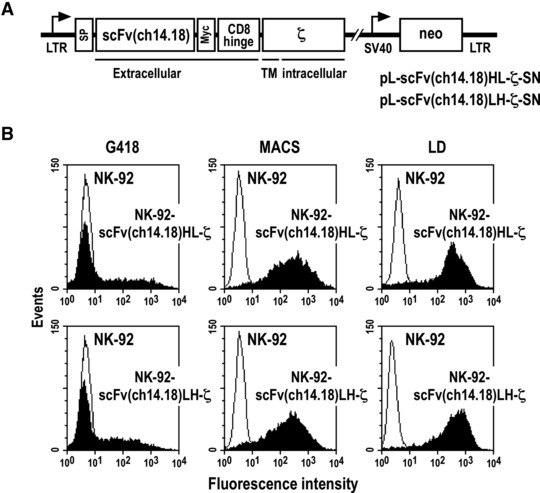Fig 1.

Transduction of NK-92 cells with retroviral vectors encoding chimeric scFv(ch14.18)-ζ antigen receptors. (A) Schematic representation of pL-scFv(ch14.18)-ζ-SN constructs. The Moloney murine leukaemia virus 5′ long terminal repeat (LTR) controls the expression of chimeric scFv(ch14.18)-ζ antigen receptors which consist of an N-terminal immunoglobulin heavy-chain leader peptide (signal peptide), a GD2-specific single-chain antibody scFv(ch14.18) with heavy (VH) and light chain (VL) variable domains in VH-linker-VL (HL) or VL-linker-VH (LH) orientation, a Myc-tag, the hinge region of CD8α and the CD3-ζ chain. The neomycin-resistance gene for G418 selection of transduced cells is driven by the SV40 early promoter. (B) Surface expression of chimeric scFv(ch14.18)-ζ antigen receptors. After G418 selection of transduced cells (G418), NK-92-scFv(ch14.18)HL-ζ and NK-92-scFv(ch14.18)LH-ζ cells expressing homogenous levels of the CARs on their surface were enriched by immunomagnetic separation with mAb 9E10 and goat antimouse IgG-coated magnetic beads (MACS). Single cell clones were derived by limiting dilution (LD). Representative clones are shown. After each selection step, surface expression of scFv(ch14.18)-ζ receptors was determined by flow cytometry using mAb 9E10 and FITC-labelled goat antimouse secondary antibody. NK-92 cells transduced with empty pLXSN served as a control.
